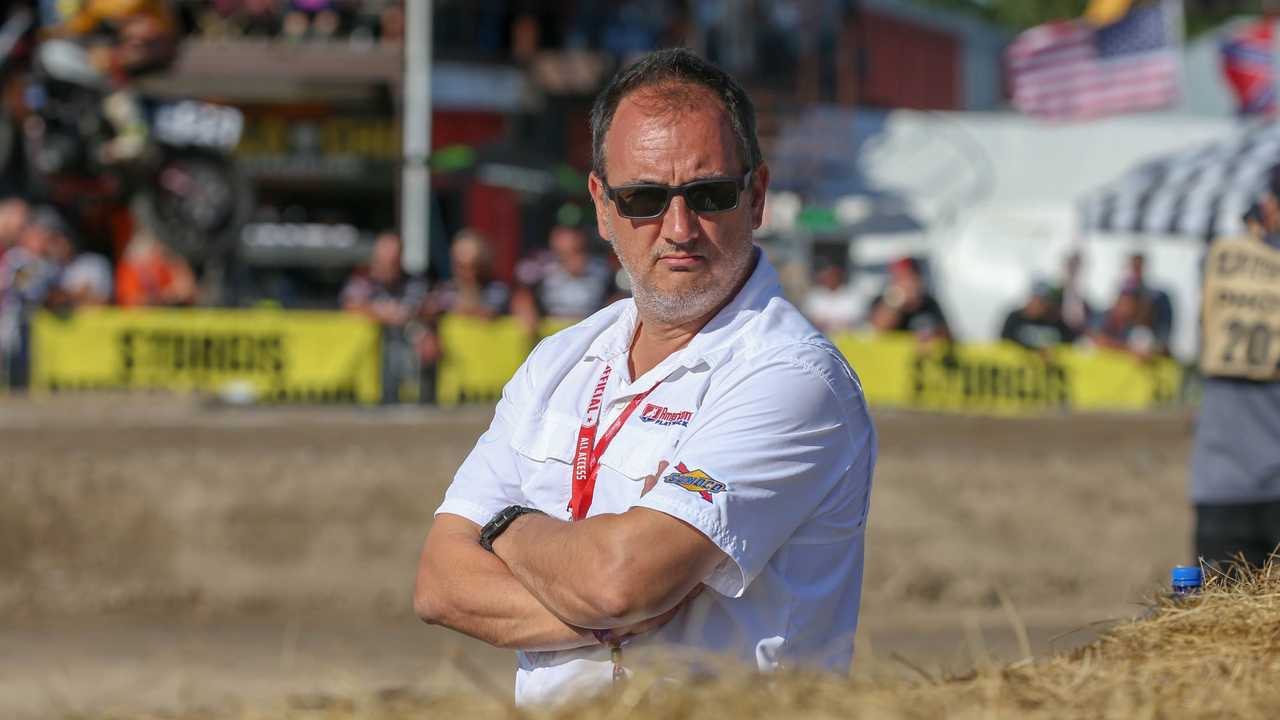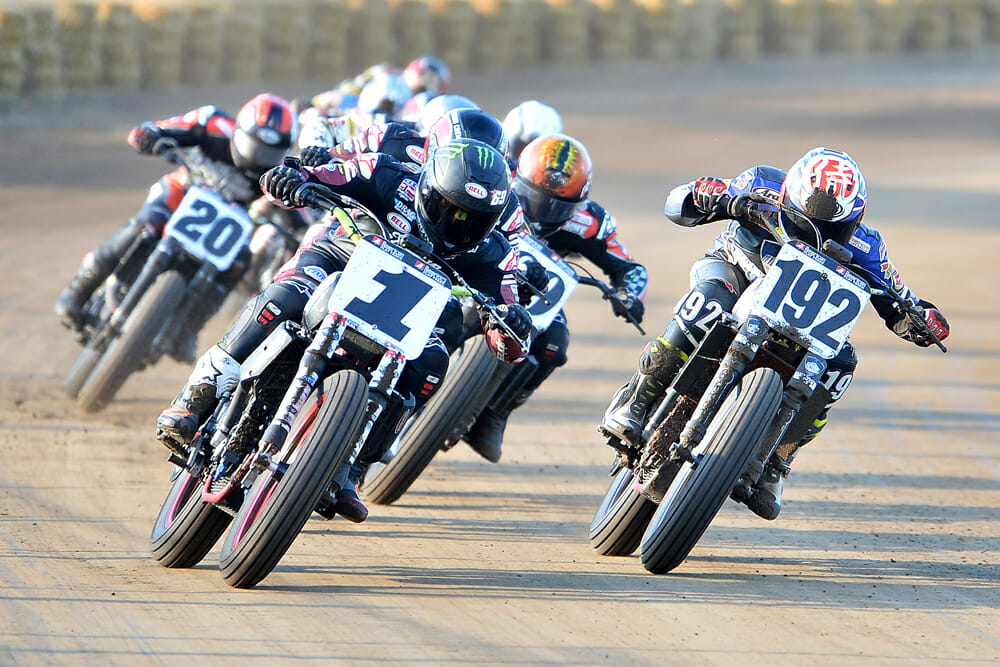
After two years in which the Indian FTR750 took almost every podium position in the American Flat Track Twins Class, few were surprised when the series announced rules changes in October that were intended to help other brands compete.
A month or so after those changes were announced, Indian issued a statement say that while the company had no real beef with those first two points, “We take serious issue with the third rule change — allowing production engines to increase from 38 mm throttle bodies to 40 mm.”
The letter continued, “This rule excludes Indian Motorcycle Racing, because the Scout FTR750 is not a street-legal production motorcycle. Not only does the rule singularly handicap Indian Motorcycle, it represents a significant impairment of our ability to compete on an equal level with every other team in the paddock, specifically on mile tracks.”
There’s a lot to unpack in the rule changes and Indian’s reaction. I spoke to AFT boss Michael Lock about the fuel change, and he described it as pretty much a no-brainer for a sport trying to attract a younger audience, update its image, and present itself as technologically up to date.
Indian admits that a change to the spec fuel affects everyone the same way; they went on to accept a lower power output as a result. On paper, a lower octane ratio will limit maximum compression ratios and reduce peak power. That’s on paper. In the real world of flat-track racing, where traction is limited and more power doesn’t necessarily mean more speed, I’m not convinced that unleaded fuel will make much difference.
Bryan Smith told me that his Crosly/Howerton team was familiar with the new fuel because
There’s a lot to unpack in the rule changes and Indian’s reaction. I spoke to AFT boss Michael Lock about the fuel change, and he described it as pretty much a no-brainer for a sport trying to attract a younger audience, update its image, and present itself as technologically up to date.
Indian admits that a change to the spec fuel affects everyone the same way; they went on to accept a lower power output as a result. On paper, a lower octane ratio will limit maximum compression ratios and reduce peak power. That’s on paper. In the real world of flat-track racing, where traction is limited and more power doesn’t necessarily mean more speed, I’m not convinced that unleaded fuel will make much difference.
Bryan Smith told me that his Crosly/Howerton team was familiar with the new fuel because Ricky Howerton has used it in some very high performance auto engines. In fact, the high-lead-content Sunoco Supreme that AFT used to use as a spec fuel was so corrosive that Howerton “pickled” race motors by running them for a few minutes on GTX-260 fuel after each race. Smith said they’d dyno-tested motors on both fuels and that he didn’t expect that change to be significant.
has used it in some very high performance auto engines. In fact, the high-lead-content Sunoco Supreme that AFT used to use as a spec fuel was so corrosive that Howerton “pickled” race motors by running them for a few minutes on GTX-260 fuel after each race. Smith said they’d dyno-tested motors on both fuels and that he didn’t expect that change to be significant.
Leave a Reply